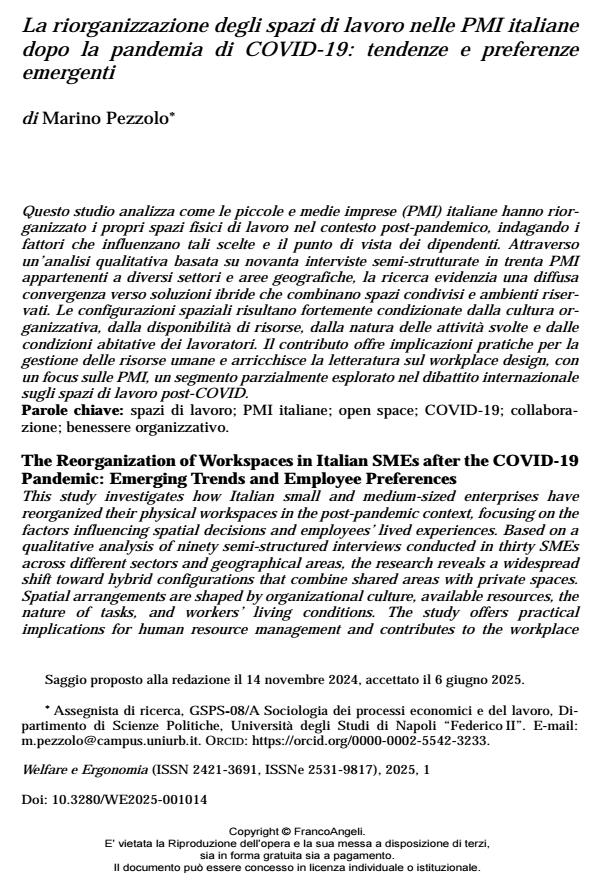The Reorganization of Workspaces in Italian SMEs after the COVID-19 Pandemic: Emerging Trends and Employee Preferences
Journal title WELFARE E ERGONOMIA
Author/s Marino Pezzolo
Publishing Year 2025 Issue 2025/1
Language Italian Pages 16 P. 233-248 File size 104 KB
DOI 10.3280/WE2025-001016
DOI is like a bar code for intellectual property: to have more infomation
click here
Below, you can see the article first page
If you want to buy this article in PDF format, you can do it, following the instructions to buy download credits

FrancoAngeli is member of Publishers International Linking Association, Inc (PILA), a not-for-profit association which run the CrossRef service enabling links to and from online scholarly content.
This study investigates how Italian small and medium-sized enterprises have reorganized their physical workspaces in the post-pandemic context, focusing on the factors influencing spatial decisions and employees’ lived experiences. Based on a qualitative analysis of ninety semi-structured interviews conducted in thirty SMEs across different sectors and geographical areas, the research reveals a widespread shift toward hybrid configurations that combine shared areas with private spaces. Spatial arrangements are shaped by organizational culture, available resources, the nature of tasks, and workers’ living conditions. The study offers practical implications for human resource management and contributes to the workplace design literature by shedding light on SMEs, an organizational segment that remains underexplored in the international discourse on post-COVID work environments.
Keywords: workplace design; Italian SMEs; open space; COVID-1; collaboration; employee wellbeing.
Marino Pezzolo, La riorganizzazione degli spazi di lavoro nelle PMI italiane dopo la pandemia di COVID-19: tendenze e preferenze emergenti in "WELFARE E ERGONOMIA" 1/2025, pp 233-248, DOI: 10.3280/WE2025-001016